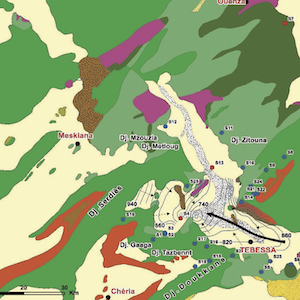The integration of geochemical and isotopic approaches for thermo-mineral water characterization: the case of Tebessa (North Eastern Algeria)

All claims expressed in this article are solely those of the authors and do not necessarily represent those of their affiliated organizations, or those of the publisher, the editors and the reviewers. Any product that may be evaluated in this article or claim that may be made by its manufacturer is not guaranteed or endorsed by the publisher.
Authors
This research aims to assess the hydrogeochemical evolution and the assessment for drinking and irrigation use of the spring water from the alluvial aquifer and major karst aquifer systems in Tebessa (the northeastern part of Algeria). For achieving this goal, 25 groundwater samples from several springs, including thermo-mineral springs, were examined and subjected to multivariate statistical analysis (principal component analysis), isotopic approaches, and geochemical modelling. However, it was revealed that the hot waters interact at depth with Triassic evaporates located in the hydrothermal conduit (fault), giving rise to the Na+-Cl- water type. Furthermore, the freshwater characterized the karst aquifer marked by the Ca2+ HCO3 - water type with low salinity concentrations. On the other hand, the majority of cations and anions and electrical conductivity, which characterize the chemical composition of the overall water springs, were below the limits allowed for drinking water according to the standards. In terms of hydrochemical facies, it was discovered that throughout the study area, two chemical facies were predominant (Ca2+- HCO3 - and Na+- Cl-). Water-rock interaction, characterized by the dissolution of carbonates and silicates, plays a primordial role in the chemical composition of the groundwater. Stable isotopic analyses of the δ18O and δ2H compositions of the waters suggest that the cold waters of the study area are of meteoric origin. Anyway, it was concluded that the meteoric recharge was precipitation, which recharged from a higher altitude (600–1700 m) and infiltrated through deep faults and fractures in the carbonate formations of the Tebessa Mount.
How to Cite

This work is licensed under a Creative Commons Attribution-NonCommercial 4.0 International License.
PAGEPress has chosen to apply the Creative Commons Attribution NonCommercial 4.0 International License (CC BY-NC 4.0) to all manuscripts to be published.














